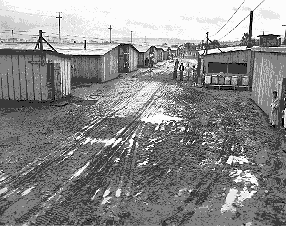 |
 |
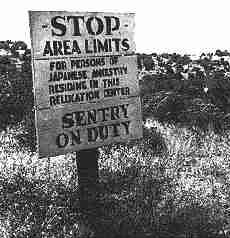 |

Official B/W photos taken by the U.S. War Relocation Authorities (WRA)
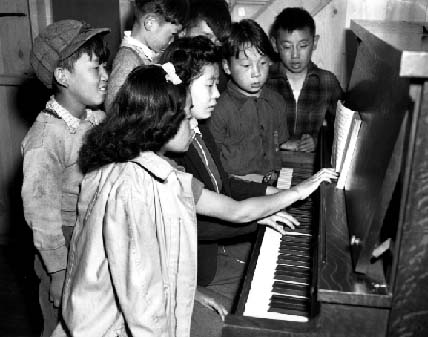
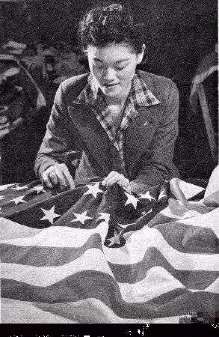
A forgotten photo
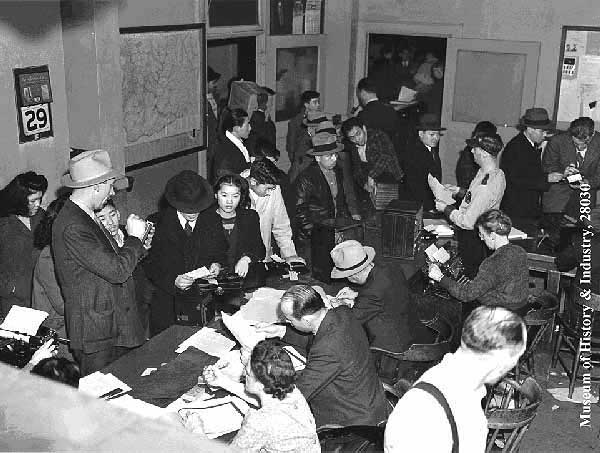
|
Before the departure to "the relocation camps" all Japanese-Americans had to surrender their photo cameras (and radios) to the U.S. authorities who confiscated it. This is a rare photo of that procedure. (U.S. Museum of History and Industry, photo 28030) So did all these Japanese-Americans relocated to the "Camp Harmony". But, Eddie Sato, an artist who grew up in Seattle, while an inmate at the Puyallup Assembly Center, served as staff artist on the Camp Harmony News Letter and sketched scenes of daily life. A sketchbook came to the Washington Libraries via Frank Miyamoto in 1975, and eight pen and ink drawings were donated by the artist in 1996. Camp Harmony News Letter Souvenir Edition.Drawings by Eddie Sato and other members of the art staff: Keith Oka, Sho Kaneko, Hisashi Hirai, Ed Tsutakawa and Moe Naito. |
|
|
Sketchbook drawings
May 1942 drawing of a clothes line. June 1942 drawing of futons airing on a sports field. July 1942 drawing of man making getas, Japanese wooden clogs. June 1942, depiction of the entrance gate of the camp. June 1942 drawing of the laundry house. June 1942 drawing of two men playing shogi, Japanese chess. |
|
Drawings donated in 1996
dated August 31, 1942. dated July 4, 1942. dated August 29, 1942. dated August 29, 1942. |
dated August 29, 1942. (Majestic Mt. Rainier in background)," dated August 29, 1942. dated August 30, 1942. dated August 29, 1942. |
SO CALLED CONTROLLED MIGRATION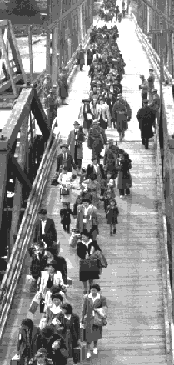 "The largest controlled migration in history"
"During the spring and summer of 1942, the United States Government carried out, in remarkably short time and without serious incident, one of the largest controlled migrations in history. This was the movement of 110,000 people of Japanese descent from their homes in an area bordering the Pacific coast into 10 wartime communities constructed in remote areas between the Sierra Nevada Mountains and the Mississippi River."
"The largest controlled migration in history"
"During the spring and summer of 1942, the United States Government carried out, in remarkably short time and without serious incident, one of the largest controlled migrations in history. This was the movement of 110,000 people of Japanese descent from their homes in an area bordering the Pacific coast into 10 wartime communities constructed in remote areas between the Sierra Nevada Mountains and the Mississippi River."
Relocation of Japanese-Americans, War Relocation Authority (WRA) , Washington D.C., May 1942 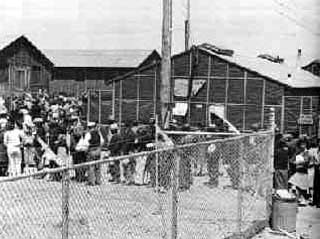
Mario's note: Syntagm " Ethnic Cleansing " was invented by Western diplomats 50 years later, referring to war crimes during the war in Bosnia and Herzegovina and in Croatia. |

